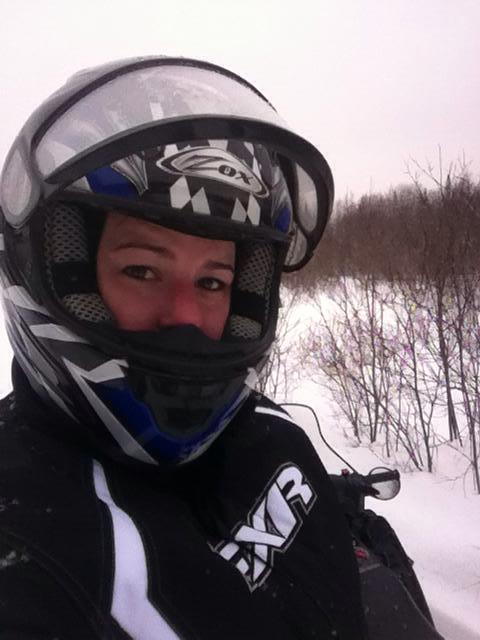
This week’s safety story comes from someone who actually works in the safety industry. SafeStart account manager Cheri Genereaux works with companies in the construction industry to help them reduce employee injuries. She regularly speaks to clients that have workers on site 12 hours a day, 6 days a week. Fatigue is an issue her clients deal with all the time—and she’s also had her own personal brush with the potentially terrifying consequences of extreme fatigue.
Cheri’s an avid snowmobiler and recently went on a 200-mile trip, which is over twice as far as her previous longest outing on a snowmobile. It was going to be a long day. And there were no communication devices on the snowmobile, so once she got out there it was just Cheri and her machine.
Approaching the last leg of the trip, she reached a T-shaped intersection. To the left was the town of Denbigh, about 25 miles away, and to the right was her destination, but it was over 30 miles off and there was nowhere to stop on the way.
The long journey was beginning to take its toll and she didn’t want to push herself too hard, so she decided to head into town to get something to eat. But when she arrived she discovered that a recent storm had knocked the power out and nothing was open.
So after eating the last of her food, she pressed on to her destination—which was now over 55 miles away. She was way behind schedule and hungry and was starting to get tired. In her state of fatigue, she started literally cutting corners by weaving dangerously across the path as she approached twists and bends. In SafeStart terms, her fatigue was causing her to rush and it was affecting her decisions about safe driving practices, putting herself (and others) in the line-of-fire.
And that’s when she remembered her conversations with her clients. She always told them that there’s no magic wand to reverse fatigue but that everyone can take practical measures to avoid its effects. Using another SafeStart term and skill, she self-triggered on her fatigue and corrected her actions in real-time.
So she stopped cutting corners blindly—and it’s a good thing she did because around the next bend came three snowmobile riders speeding towards her clearly not paying attention. If she’d continued to cut corners then there would have been a head-on collision—and it’s almost impossible to get medical attention to such a remote location in the middle of winter.
Cheri’s story is a perfect example of how a disastrous situation can be avoided with SafeStart’s practical safety skills—and demonstrates how SafeStart protects workers whether they’re at work, at home or on a snowmobile in the middle of nowhere. You can call Cheri and ask her how effective they are at keeping people like her safe.
And if you work in the construction industry, check out Cheri’s article in OH&S Magazine on the dangers of ‘stupid’ mistakes and what construction safety professionals can do about them.
